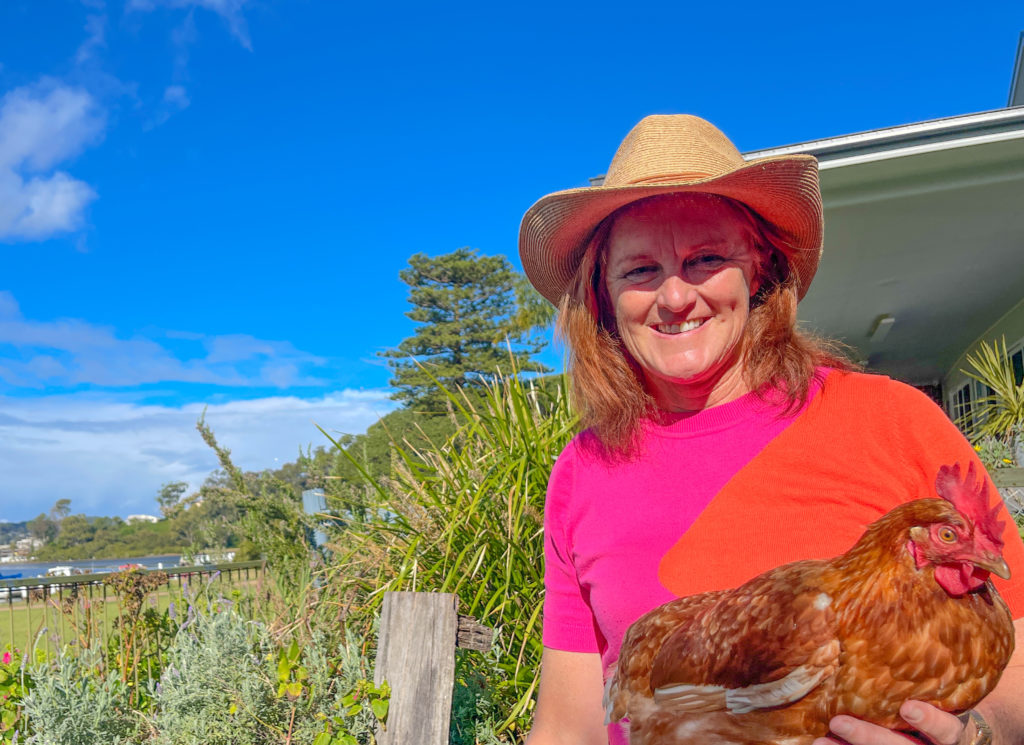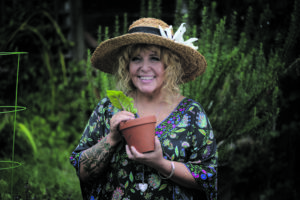No matter how or where you garden, or if you barely garden at all, I’m pretty sure that nearly all of us have a plant living in a pot somewhere in our homes.
Maybe it’s thriving but more often than not, it could be struggling and one of the major reasons is that it is living in a pot that just isn’t suitable for it.
This week let’s explore the types of pots you might consider for your plant friends.
Size Matters
While it is very tempting and seemingly cost saving to put your baby plant into a big pot for it to ‘grow into’, don’t.
For many plants the more soil you have around them in a container, the more opportunities for diseases and arising problems with drainage.
Ensure that your pot fits the dimensions and scale of your plant and that once potted up it will be stable and not prone to falling over easily.
There are actually some plants that love being root-bound like the Peace Lily (Spathiphyllum wallisii) and Spider Plant (Chlorophytum comosum), so check with your species and what they prefer to ensure you give them a happy, perfectly fitted home.
Materials Matter Too
What your pots are made of will have a huge influence on your plants.
Plastic: The bad thing about them is that they are, well, plastic but they are cheap, reusable, light and retain water perfectly. Holes can easily be drilled or punched into bases, and they can be hung, mounted on walls and are available these days in a huge range of textures as well as colours. Recycling by making plastic containers your new plant pots is also an exercise in sustainability that helps us all.
Fiberglass: These are usually textured to look like stone or terracotta and are a cheaper and much lighter alternative when looking for over-sized pots for small trees and the like. You will need to ensure they have adequate drainage holes and will find they work better if placed upon drainage material like a thick layer of gravel.
Terracotta, Ceramic and Cement: Unless this popular trio is lined or has been sealed inside, they will quickly drink up the moisture from your potting soil. In saying that, they work well for Mediterranean plants and others that like to stay on the drier side.
Timber: Wine barrels have been popular in the past and any timber container you decide to use will last longer naturally if it is created in hardwood but will need to be lined. Stay well clear of treated timbers and any that may have been painted with lead or toxic paints.
Metal: They may get very hot so use in shady spots and don’t upcycle metals which may be toxic if growing potted edibles. Many upcycled items made of metal can make really quirky and interesting containers and most can be drilled easily to provide drainage holes.
Recycling: Of course, you can reuse old plant pots and you may find containers previously used for other purposes to suit your plant but don’t reuse the problems that might be hiding in them. Scrub recycled containers and pots in hot soapy water and then soak for in a solution of one part bleach and nine parts water for 15 minutes. Rinse very well and leave to air dry in the sun.
Self-Watering Pots and Pots Without Holes
These can be good for those who are away a lot, very busy or forgetful.
They work by holding a water in their base so that the soil draws it up.
Usually made of plastic, often a bit expensive, they are light, great for beginner gardeners and for those who find watering difficult to manage.
In my opinion all pot plants should have holes because all plants and soils don’t live naturally in pots.
Holes help the soil breath as well as releasing water that is not taken up and they keep your home, office desk and patio drier and cleaner.
If you do have a gorgeous pot without holes that you just must use, then put a layer of pebbles in the base and place a pot with a hole into it.
Getting it All Together
The best way to grow potted plants of any type, it’s to group them together in relation to their needs.
This creates a microclimate which enables the plants to thrive.
You are also cutting down on work and guesswork if all the plants that need almost daily watering are together and the ones that prefer dry feet live in another area together.
For an aesthetically pleasing arrangement, use odd numbers of pots and vary the textures while sticking to colours and tones that reflect your style and surrounds.
Perhaps you want a Mexican fiesta on your balcony or a white-washed beachy look in a corner of your garden.
Stick with one look and your potted plants will become a beautiful mobile garden that will take you anywhere.
TIME TO GET YOUR HANDS DIRTY
May is moving month and right now you can plant and transplant your gardenias, azaleas and other small shrubs.
Reduce watering of indoor plants and move them into warmer positions.
Lily bulbs can go in now and you can also plant: artichokes, broad beans, broccoli, cress, cabbage, carrot, English spinach, kale, kohlrabi, lettuce, mid and late season onion`s, parsnip, peas, radish, snow peas, spring onion, turnip, forget-me-nots, lobelia, gypsophila, honesty, lupin, nemesia, nigella, pansy, poppy, snapdragon, statice, stock, sweet pea, viola, wallflower.
PLANT HAPPENINGS AROUND THE COAST THIS WEEK
Planting for Wildlife Workshop: 10am – 12pm, Saturday 29th May. Plant it and they will come! Join CEN (Community Environment Network) to learn how to start creating habitat gardens that will be beautiful spaces to enjoy. Rumbalara Environmental Education Centre, 149 Donnison Street, Gosford. To Book: cen.org.au/events
Woy Woy Produce Swap 10am – 11am Sunday 30th May, Woy Woy Peninsula Community Garden. 85 -87 Moana Street Woy Woy. A produce swap works by having a set time and place for backyard growers to bring their excess food to share with other growers. facebook.com/WoyWoyPeninsulaCommunityGarden
SWAMP (Sustainable Wetlands Agricultural Makers Project) Community Garden Open Day – 9.30 to 11.30, Sunday 30th May, Central Coast Wetlands, South Tacoma Road, Tuggerah. Morning tea is provided!! Come help us round the garden and enjoy this stunning space, on this day you have the opportunity to join as a member or pop in and say hi and see what is happening in the garden. More details: swampcentralcoast.com.au
The 2021 Central Coast Harvest Festival Program See what’s on, plan your weekend (12th – 13th June). The program is now available online at: http://info.centralcoast.nsw.gov.au/harvestfestival
DOWN IN YOUR GARDEN
Each week, I chat with Central Coast Gardeners about their plants, passions and get a bit of local advice from them for the rest of us!
This week, I visited a Liesl Tesch, MP, Member for Gosford, proud Australian representative at seven Paralympic Games and proud Central Coast gardener.
Liesl has been interested in nature and gardening since she was a child inspired by her Mum’s clever gardening trick of planting peas and beans so she and her sister could ‘find’ them.
Flowers run through our conversation as vibrantly as the blossoms I find in every nook and cranny of her flowing, soft organic garden.
“Fresh flowers are a part of my every day, she told me.
“I’ve always found them super-important and bought them into work always.
“I used to bring them into my classrooms when I was a teacher and I continue bringing them into my office and NSW Parliament – I have to have flowers.
Her garden was a barren urban plot when she made it home in 2012.
“I’m not a plant-buyer, I collect cuttings from friends and family.
“I have the beautiful old lavender from my mother’s garden and many of her plants as well as interesting cuttings that friends share with me.”
The garden is soft, fragrant with not only flowers but herbs and interesting foliage which Liesl’s chickens happily free-range through in the Woy Woy sunshine.
She also keeps bees and currently has two hives which prompts her to include lots of bee-friendly flowers as well.
Q: One Plant You Can’t Live Without:
A: Fragrant plants. Anything you can brush past and release fragrance.
Q: A Piece of Advice:
A: Improve the soil, but don’t get a truckload of compost on the day you move in!
Q: What Do you Think Your Garden Is Missing:
A: More vegetables! The chickens find a way to get into everything.
Cheralyn Darcey is a gardening author, community garden coordinator and along with Pete Little, hosts ‘At Home with The Gardening Gang’ 8 – 10am every Saturday on Coast FM 96.3.
Contact Cheralyn gardeningcentralcoast@gmail.com with your questions, events, news or if
would like to be a part of ‘DOWN IN YOUR GARDEN’.




